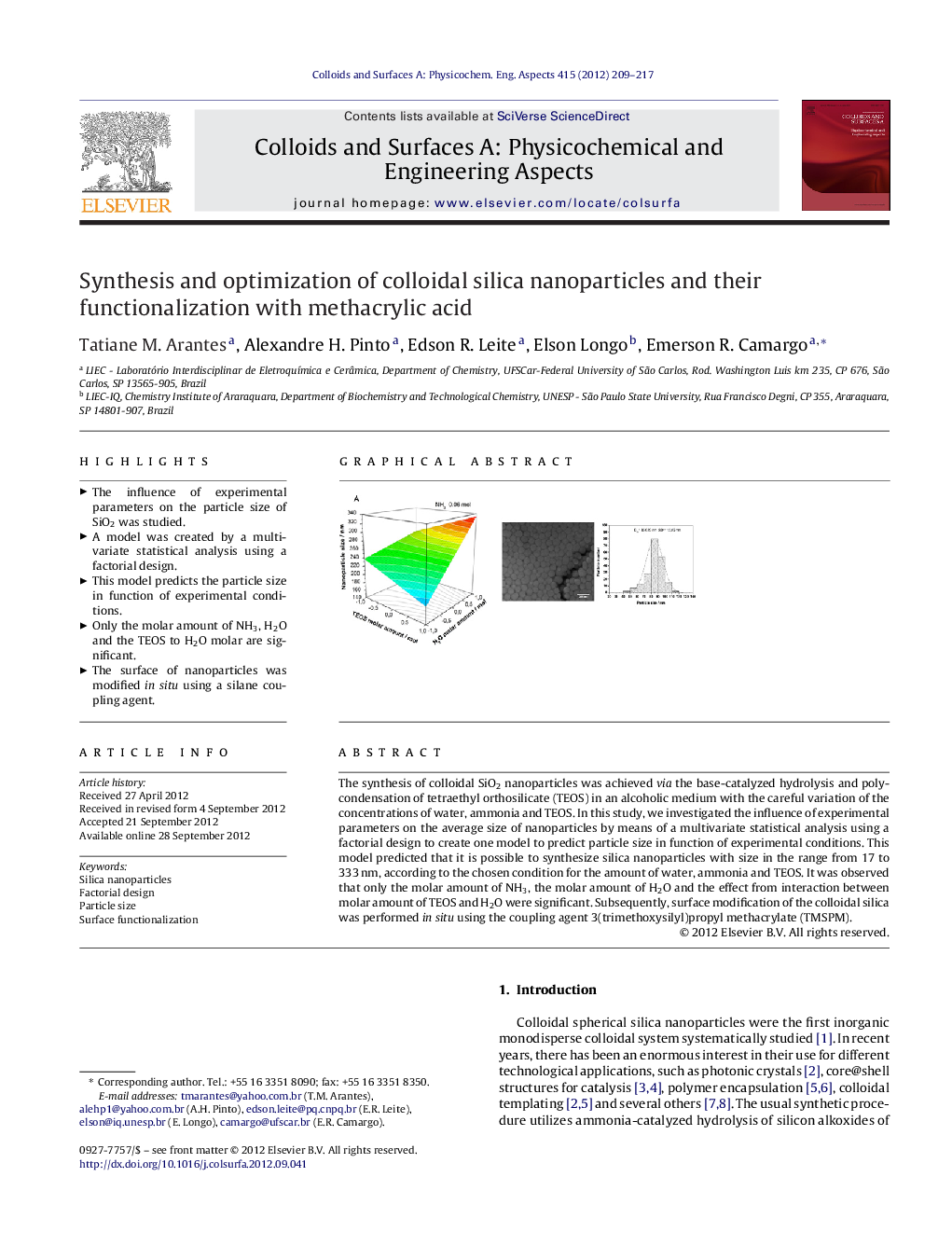| Article ID | Journal | Published Year | Pages | File Type |
|---|---|---|---|---|
| 593894 | Colloids and Surfaces A: Physicochemical and Engineering Aspects | 2012 | 9 Pages |
The synthesis of colloidal SiO2 nanoparticles was achieved via the base-catalyzed hydrolysis and polycondensation of tetraethyl orthosilicate (TEOS) in an alcoholic medium with the careful variation of the concentrations of water, ammonia and TEOS. In this study, we investigated the influence of experimental parameters on the average size of nanoparticles by means of a multivariate statistical analysis using a factorial design to create one model to predict particle size in function of experimental conditions. This model predicted that it is possible to synthesize silica nanoparticles with size in the range from 17 to 333 nm, according to the chosen condition for the amount of water, ammonia and TEOS. It was observed that only the molar amount of NH3, the molar amount of H2O and the effect from interaction between molar amount of TEOS and H2O were significant. Subsequently, surface modification of the colloidal silica was performed in situ using the coupling agent 3(trimethoxysilyl)propyl methacrylate (TMSPM).
Graphical abstractFigure optionsDownload full-size imageDownload as PowerPoint slideHighlights► The influence of experimental parameters on the particle size of SiO2 was studied. ► A model was created by a multivariate statistical analysis using a factorial design. ► This model predicts the particle size in function of experimental conditions. ► Only the molar amount of NH3, H2O and the TEOS to H2O molar are significant. ► The surface of nanoparticles was modified in situ using a silane coupling agent.
